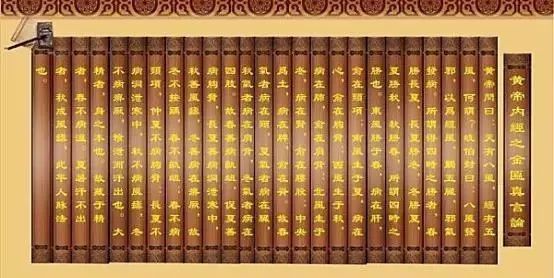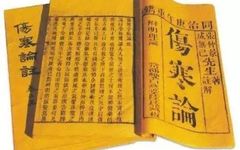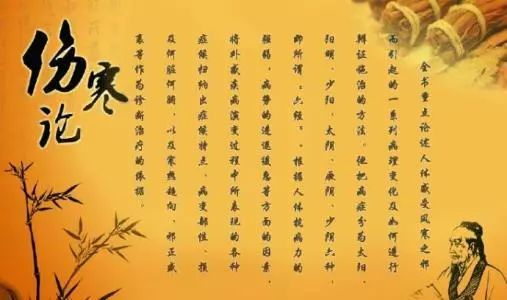
The “Treatise on Cold Damage” (Shang Han Lun) was authored by the eminent physician Zhang Ji (also known as Zhongjing) during the Eastern Han Dynasty, completed in the early 8th century AD. The text consists of 16 volumes, 397 methods, and 113 formulas, structured around the six meridians and focusing on the patterns of febrile diseases. It clearly summarizes the medical achievements prior to the Han Dynasty and establishes the theory of differentiation and treatment, which has been revered as a classic by later generations. The book was compiled and organized into 10 volumes by Wang Shuhe during the Jin Dynasty, and the current version is a reprint from the Ming Dynasty by Zhao Kaimei. “Cold Damage” refers broadly to various syndromes caused by exogenous diseases, and this book specifically discusses the pathology of cold damage diseases. Below are interpretations of commonly used formulas.
1. Shi Zao Tang (Ten Jujube Decoction)
This formula consists of three herbs: Yuanhua (Daphne genkwa), Gansui (Kansui), and Dajie (Euphorbia), ground into powder and decocted with ten jujubes. It is used to treat suspended fluids, characterized by water retention in the hypochondrium leading to cough, chest pain, a feeling of fullness in the heart, dry retching, shortness of breath, headache, dizziness, or chest and back pain that worsens with breathing. The tongue coating is slippery, and the pulse is deep and wiry. It is also commonly used for edema and abdominal distension due to excess. This formula has the function of expelling water and fluids.
The three main herbs in this formula each have the effects of expelling water, eliminating accumulation, and reducing swelling. Their properties are all strong, hence the addition of ten jujubes to tonify Qi and protect the stomach, moderating the toxicity of the strong herbs to prevent or lessen adverse reactions, achieving the goal of attacking while supplementing, and not harming the righteous Qi. As stated in the “Medical Formula Theory”: “Zhongjing named it Shi Zao, relying entirely on the sweet and gentle nature of jujubes to rescue the spleen and stomach, thus forming a master of regulation.” The name “Shi Zao” indicates both the use of ten jujubes in the formula and emphasizes the special role of jujubes in moderating the strong toxicity and protecting the stomach Qi.
This formula, when removing Yuanhua and Dazao, and adding Baijiezi (White Mustard Seed), is named “Kong Xian Dan” (Phlegm-Controlling Pill) in the “Three Causes of Extreme Disease Formula Theory,” which has the function of controlling phlegm and stagnant fluids, hence the name.
2. Da Xiao Qing Long Tang (Major and Minor Blue Dragon Decoction)
Da Qing Long Tang consists of Ma Huang (Ephedra), Gui Zhi (Cinnamon Twig), Zhi Gan Cao (Honey-fried Licorice), Xing Ren (Apricot Kernel), Shi Gao (Gypsum), Sheng Jiang (Fresh Ginger), and Da Zao (Jujube). It is used to treat exogenous wind-cold with a solid exterior and interior heat. It has the functions of inducing sweating, releasing the exterior, and clearing heat to relieve restlessness.
Xiao Qing Long Tang consists of Ma Huang, Shao Yao (Peony), Xi Xin (Asarum), Gan Jiang (Dried Ginger), Zhi Gan Cao, Gui Zhi, Wu Wei Zi (Schisandra), and Ban Xia (Pinellia). It is used for exogenous wind-cold with internal water retention. It has the functions of releasing the exterior, dispersing cold, warming the lungs, and transforming fluids.
There is an ancient saying, “Left Blue Dragon and Right White Tiger.” The Blue Dragon is a mythical wood deity of the East, representing growth and development. Zhang Bingcheng stated: “The name Xiao Qing Long refers to the dragon as a water creature, which can create clouds and bring rain, soaring through the universe; while the smaller one can also control water and drive away evil, hiding within the waves.” (“Cheng Fang Bian Du”) Both formulas have the function of inducing sweating and expelling fluids, akin to the Blue Dragon stirring clouds and controlling water, but are named Major and Minor “Qing Long Tang” based on their strength of sweating.
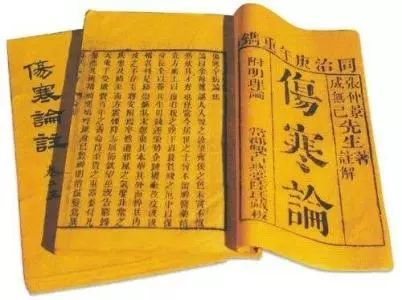
3. San Cheng Qi Tang (Three Purging Decoction)
Cheng Qi Tang has three formulas: Da Cheng Qi Tang consists of Da Huang (Rhubarb), Hou Po (Magnolia Bark), Zhi Shi (Bitter Orange), and Mang Xiao (Glauber’s Salt). It is used to treat the Yangming bowel excess syndrome characterized by fullness, distension, dryness, and excess, or pulse that is full, or “heat accumulation” in the intestines, with the function of strongly purging heat accumulation. Xiao Cheng Qi Tang consists of Da Huang, Zhi Shi, and Hou Po, primarily used for Yangming bowel excess characterized by fullness and distension, with the function of lightly purging heat accumulation. Tiao Wei Cheng Qi Tang consists of Zhi Gan Cao, Mang Xiao, and Da Huang, used to treat Yangming dryness-heat internal accumulation without fullness, or intestinal heat accumulation causing rashes, sore throat, and ulcers, with the function of gently purging heat accumulation.
These three formulas consist of only five herbs, among which Da Huang is bitter and cold to drain heat and promote bowel movements, cleansing the intestines and stomach; Hou Po is bitter and acrid, warming and drying dampness, moving Qi, and stopping vomiting; Zhi Shi is bitter and slightly cold, moving Qi to eliminate distension and resolve accumulation; Mang Xiao is salty and cold to purge and eliminate heat, softening hardness and moistening dryness; Zhi Gan Cao harmonizes the purging power of Da Huang and Mang Xiao, making it gentle. However, through clever combinations, their effects differ, showcasing the ancient practitioners’ unique craftsmanship in herbal formulation.
“Cheng” means to receive, to follow, and to control. Wang Jinzang stated: “Cheng Qi means to follow downwards.” (“Ancient Formula Annotations”) Ke Yunbo stated: “All diseases arise from Qi, and the inability to eliminate waste is due to the obstruction of Qi, hence purging formulas must use Qi-moving herbs to govern them. Excess is harmful, while Cheng is controlling; this is the essence of Cheng Qi; also, the disease is removed without harming the original Qi, which is the meaning of Cheng Qi.” (“Shang Han Lai Su Ji”) The six bowels function through communication, and the stomach Qi descends to follow; both Da and Xiao Cheng Qi Tang strongly purge heat accumulation, while Tiao Wei Cheng Qi Tang can harmonize the stomach and intestines, all able to ensure the stomach Qi descends, allowing heat accumulation to pass, harmonizing the stomach Qi, and thus eliminating various symptoms.
4. Da Xiao Xian Xiong Tang (Major and Minor Chest-Obstruction Decoction)
Da Xian Xiong Tang consists of Da Huang, Mang Xiao, and Gansui. It is used to treat the major chest obstruction syndrome caused by the mutual binding of water and heat in the chest and abdomen. It has the functions of purging heat, expelling water, and unblocking obstructions.
Xiao Xian Xiong Tang consists of Huang Lian (Coptis), Ban Xia, and Gua Lou Shi (Trichosanthes Fruit). It is used to treat the minor chest obstruction syndrome caused by mismanagement of exterior symptoms leading to internal heat, with phlegm-heat binding under the heart. It has the functions of clearing heat, transforming phlegm, and relieving chest obstruction.
Chest obstruction refers to the syndrome caused by heat binding in the chest, resulting in pain under the heart and a hard, full sensation upon palpation. In the “Treatise on Cold Damage,” it is classified based on etiology and clinical manifestations into major, minor, heat excess, cold excess, water, blood, and other types of chest obstruction. The two formulas treat major and minor chest obstruction respectively. Cheng Wujin stated: “Chest obstruction is caused by high evil, and it is treated by descending to balance it, hence the name ‘Xian Xiong Tang.'” (“Annotations on the Treatise on Cold Damage”) The formulas vary in strength and severity, both able to eliminate the mutual binding of phlegm and heat in the chest, akin to a tactical maneuver, hence the names “Da Xian Xiong Tang” and “Xiao Xian Xiong Tang.”
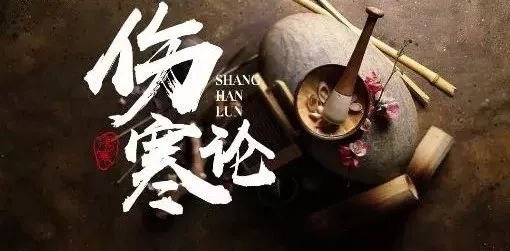
5. Wu Ling San (Five-Ingredient Powder)
This formula consists of Zhu Ling (Polyporus), Ze Xie (Alisma), Bai Zhu (White Atractylodes), Fu Ling (Poria), and Gui Zhi (Cinnamon Twig). It is used to treat exterior pathogenic factors with internal water retention. Symptoms include headache, fever, edema, diarrhea; or phlegm retention, palpitations below the navel, vomiting foamy saliva, and dizziness. It has the functions of promoting urination, draining dampness, warming Yang, and transforming Qi.
Zhao Yuhuang stated: “Wu Ling San is designed to promote the water of the bladder and is also the primary formula for expelling internal and external water and fluids.” (“Famous Physician’s Formula Theory”) Although the symptoms treated by this formula vary, if one understands the pathogenesis as the bladder’s Qi transformation being impaired, and the main symptom being difficulty in urination, it can be effectively applied. The formula consists of five ingredients, with Zhu Ling as the main herb for promoting urination, hence the name “Wu Ling San.” It is also said that “Ling” means to make water flow.
This formula, when removing Gui Zhi, is named “Si Ling San” (Four-Ingredient Powder), used to treat internal injury from food and dampness. When adding Ren Shen (Ginseng), it is called “Chun Ze Tang” (Spring Moistening Decoction), intended to assist Qi and generate fluids, akin to spring rain nourishing the earth; when adding Yin Chen (Artemisia), it is called “Yin Chen Wu Ling San,” an effective formula for treating damp-heat jaundice.
6. Si Ni Tang (Four Reversal Decoction)
This formula consists of Zhi Gan Cao, Gan Jiang, and Fu Zi. It is used to treat the Shaoyin disease characterized by cold extremities, aversion to cold, curled-up posture, vomiting, abdominal pain, and diarrhea with clear stools, fatigue, drowsiness, no thirst, and a weak, thin pulse; as well as the Taiyang disease with a desire to sweat but loss of Yang. It has the function of returning Yang and rescuing from reversal.
“Si Ni” refers to the cold extremities. The extremities are the foundation of Yang. Whenever the kidney Yang is weak, and Yin cold is excessive, or cold evil directly invades the three Yin, it can lead to the syndrome of cold extremities. This formula uses Fu Zi and Gan Jiang to return Yang and rescue from reversal, warming the interior and dispelling cold; Zhi Gan Cao harmonizes and tonifies Qi, stabilizing the center. It specifically treats the syndrome of cold extremities due to weak kidney Yang and excessive Yin cold, achieving the goal of returning Yang and rescuing from reversal, hence the name “Si Ni Tang.”
The “Treatise on Cold Damage” also has a formula named “Si Ni San,” consisting of Zhi Gan Cao, Zhi Shi, Chai Hu, and Bai Shao, used to treat heat reversal syndrome; its function is to penetrate and resolve stagnant evil, harmonizing the liver and spleen. The forms and effects of the formulas differ, and clinical application should be carefully considered.
7. Bai Hu Tang (White Tiger Decoction)
This formula consists of Zhi Mu (Anemarrhena), Shi Gao, Zhi Gan Cao, and Jing Mi (Rice). It is used to treat the Yangming channel heat excess, or heat evil in the Qi level characterized by severe heat, thirst, dry mouth, red face, aversion to heat, profuse sweating, and a strong or floating pulse. It has the functions of clearing heat, relieving restlessness, and generating fluids.
“Bai Hu” refers to one of the four directional deities, a collective name for the seven stars of the western sky, in ancient legends associated with the golden deity of the west, governing the Qi of autumn, when autumn metal is in command and summer heat dissipates. The formula states: “Bai Hu is the golden deity of the west, governing the autumn’s Yin beast. The tiger’s roar cools the valley winds, dispelling the summer heat, and no one can match Bai Hu in relieving heat.” (“Wen Re Jing Wei”) This formula is used for Yangming channel syndrome, indicated by severe heat, profuse sweating, and intense thirst. After taking the medicine, its heat-clearing and summer-relieving power is as swift and fierce as the Bai Hu deity, causing the heat to drop sharply and severe symptoms to resolve, hence the name “Bai Hu Tang.”
This formula, when adding Ren Shen, is called “Bai Hu Jia Ren Shen Tang,” enhancing its Qi-tonifying effect; when adding Cang Zhu, it is called “Bai Hu Jia Cang Zhu Tang” (“Classified Evidence for Living”), which has the function of clearing heat and drying dampness; when adding Gui Zhi, it is called “Bai Hu Jia Gui Zhi Tang” (“Jin Kui Yao Lue”), which has the function of clearing heat and dispersing the exterior.
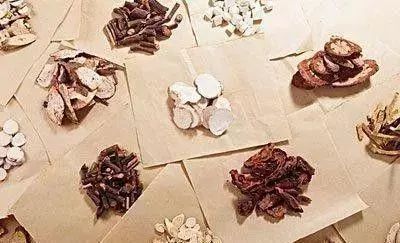
8. Ban Xia Xie Xin Tang (Pinellia Heart-Purging Decoction)
This formula consists of Ban Xia (Pinellia), Huang Qin (Scutellaria), Gan Jiang, Ren Shen, Zhi Gan Cao, Huang Lian (Coptis), and Da Zao. It is used to treat disharmony of the stomach Qi, characterized by fullness and distension under the heart without pain, or dry retching, vomiting, intestinal rumbling, diarrhea, thin yellow and greasy tongue coating, and wiry rapid pulse. It has the functions of harmonizing the stomach, descending Qi, and relieving fullness.
This formula primarily treats the syndrome caused by mismanagement of Xiao Chai Hu Tang leading to fullness. “Fullness” refers to obstruction and lack of flow. The “heart” here refers to the area under the heart, which is the stomach. Retained evil in the area under the heart leads to a feeling of blockage and discomfort in the stomach. Wang Xugao stated: “Xie Xin means to purge the stomach; fullness under the heart means stomach fullness.” (“Wang Xugao’s Six Medical Books”) Wang Youyuan stated: “It is not called purging the stomach but purging the heart, fearing that it may mix with bitter cold and harm the stomach Yang, mistakenly treating it as a Yangming method.” (“Famous Physician’s Formula Theory”) The formula uses Ban Xia as the main herb, focusing on warming and dispersing fullness while harmonizing Yin, thus relieving the fullness under the heart, hence the name “Ban Xia Xie Xin Tang.”
In the “Treatise on Cold Damage,” there are five heart-purging formulas: Ban Xia, Sheng Jiang, and Gan Cao Xie Xin Tang treat various fullness syndromes; Fu Zi Xie Xin Tang treats fullness syndrome with Yang deficiency; Da Huang Huang Lian Xie Xin Tang treats internal blazing fire.
9. Di Dang Tang (Resisting the Attack Decoction)
This formula consists of Shui Zhi (Leech), Meng Chong (Horsefly), Tao Ren (Peach Kernel), and Da Huang. It is used to treat lower jiao blood accumulation leading to lower abdominal fullness and pain, frequent urination, jaundice-like yellowing of the body, and mental agitation. It has the function of attacking and expelling accumulated blood.
The name “Di Dang” has various interpretations: one suggests that only a powerful and fierce agent can resist the heat accumulation and blood stasis; another suggests that “Di Dang” is a mispronunciation of “Zhi Dang,” referring to the leech as the main herb, hence the name. However, some say “Di Dang” means “to the right place,” as Wang Jinzang stated: “Di Dang means to the right place. Blood accumulation belongs to the extreme Yin; true Qi flows and does not enter, hence herbs alone cannot treat the evil; it is essential to use blood-sucking insects as a guide. The flying ones travel the Yang path, while the hidden ones travel the Yin path, leading Tao Ren to attack blood, and Da Huang to purge heat, breaking the unfeeling blood stasis, making it a formula that is truly effective and not to be feared for its potency.” (“Ancient Formula Annotations”) Alternatively, it is said that this formula has the function of attacking and expelling accumulated blood, directly targeting the area of attack, hence the name.
The Di Dang Wan also comes from the “Treatise on Cold Damage,” with the same ingredients but slightly lower dosages, made into pills for those with chronic conditions.
10. Fu Mai San (Pulse Resuming Powder)
This formula consists of Zhi Gan Cao, Da Zao, E Jiao (Donkey-hide Gelatin), Sheng Jiang, Ren Shen, Sheng Di (Rehmannia), Gui Zhi, Mai Dong (Ophiopogon), and Ma Ren (Sesame Seed). It is used to treat Qi deficiency and blood insufficiency leading to palpitations, shortness of breath, insomnia, pale tongue with little coating, and a pulse that is intermittent. It has the functions of tonifying Qi, nourishing blood, and restoring the pulse.
This formula was originally named “Zhi Gan Cao Tang,” named after its main herb. Fei Boxiong stated: “Zhongjing originally designed it for palpitations with intermittent pulse due to unresolved evil, hence it combines warming and moistening to clear the external evil, allowing the righteous Qi to awaken and the blood vessels to resume.” (“Medical Formula Theory”) Cheng Wujin stated: “An intermittent pulse that moves and then stops can return; if it cannot return, it is called a ‘dai’ pulse. This is due to the deficiency of blood and Qi, leading to the inability to continue. Palpitations indicate the internal deficiency of true Qi.” This indicates that an intermittent pulse and palpitations are caused by the deficiency of both Yin and Yang Qi and blood. This formula can nourish the source of blood vessels, restoring the intermittent pulse to normal, hence the name “Fu Mai Tang.”
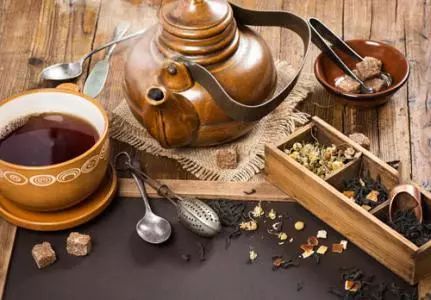
11. Zhen Wu Tang (True Warrior Decoction)
This formula consists of Fu Ling, Shao Yao, Sheng Jiang, Bai Zhu, and Fu Zi. It is used to treat spleen and kidney Yang deficiency with water retention, characterized by difficulty in urination, heaviness and pain in the limbs, aversion to cold, abdominal pain, diarrhea; or limb edema, white tongue coating, no thirst, and a deep pulse; as well as Taiyang disease with sweating that does not resolve, accompanied by fever, palpitations, dizziness, and a feeling of heaviness. It has the function of warming Yang and promoting urination.
Zhen Wu, also known as Xuan Wu, is one of the four directional deities, a collective name for the seven stars of the northern sky, as its two stars resemble a turtle (Xuan) and a snake (Wu), hence the name Xuan Wu. The “Medical Canon of the Medical School” states: “Zhen Wu is the deity of water in the north, and the name of the decoction is based on its ability to control water.” The “Essence of Han Formulas” also states: “The name Zhen Wu is entirely based on controlling and stabilizing water, to subdue its dragon.” This formula has the function of warming the kidneys and promoting water, akin to the True Warrior deity, capable of subduing the dragon and controlling water, hence the name “Zhen Wu Tang.”
12. Tao Hua Tang (Peach Blossom Decoction)
This formula consists of Chi Shi Zhi (Red Stone), Gan Jiang, and Jing Mi. It is used to treat chronic dysentery characterized by pus and blood in the stool, dark color, abdominal pain with a preference for pressure and warmth, pale tongue with white coating, and a weak or thin pulse. It has the function of astringing the intestines and stopping diarrhea.
The name “Tao Hua” refers to the red and white color of Chi Shi Zhi, also known as Peach Blossom Stone, and when this formula is decocted, it has a light red color, bright and beautiful like a peach blossom, hence the name “Tao Hua Tang.” This formula uses the strongly astringent Chi Shi Zhi as the main herb, entering the lower jiao blood level to solidify the discharge; Gan Jiang’s warming nature nourishes the lower jiao Qi level; and Jing Mi harmonizes the spleen and stomach. It is an effective formula for diarrhea due to deficiency of spleen and kidney Yang, with warming and astringent effects.
13. Gui Zhi Xin Jia Tang (Cinnamon Twig New Addition Decoction)
This formula consists of Gui Zhi, Shao Yao, Zhi Gan Cao, Sheng Jiang, Da Zao, and Ren Shen. The amounts of Shao Yao and Sheng Jiang are increased, also known as “Gui Zhi Jia Shao Yao Sheng Jiang each one tael, Ren Shen three taels New Addition Decoction.” It is used to treat body pain and cold symptoms due to deficiency of Qi and blood in the Ying and Wei levels. It has the functions of tonifying Qi, nourishing the Ying, dispelling evil, and relieving pain.
The name “New Addition Decoction” indicates that Zhang Zhongjing explained this formula is based on the previous creation of Gui Zhi Tang, adjusting the dosages and adding herbs. This reflects Zhang Zhongjing’s rigorous academic approach and noble medical ethics. Professor Liu Duzhou once stated: “Among the 113 formulas in the ‘Treatise on Cold Damage,’ the vast majority are derived from Zhang Zhongjing’s extensive research, rather than solely his own creation.”
14. Li Zhong Wan (Middle Regulating Pill)
This formula consists of Ren Shen, Gan Jiang, Zhi Gan Cao, and Bai Zhu, made into honey pills. It is used to treat diarrhea and lack of thirst due to spleen and stomach Yang deficiency, vomiting, abdominal pain, fullness, and loss of appetite, as well as cholera; or Yang deficiency with blood loss, or in children with chronic fright, excessive salivation, and chest obstruction. It has the functions of warming the middle, dispelling cold, and tonifying the spleen and stomach.
“Li” means to regulate and treat; “Zhong” refers to the middle jiao, which is the spleen and stomach. The spleen and stomach are responsible for transformation and transportation; when functioning normally, they can digest and transform food and water. When the Yang of the spleen and stomach is deficient, transformation and transportation are impaired, leading to symptoms such as vomiting, diarrhea, and abdominal pain. Cheng Yingmao stated: “The movement of Yang begins with warmth; when warmth is achieved, the essence of grains can be transformed, and the Qi of grains can rise, thus it is called Li Zhong. It serves to regulate the function of the middle jiao.” (“Ancient and Modern Famous Physician’s Formula Theory”) This formula functions to warm the middle, dispel cold, and regulate the spleen and stomach, hence the name “Li Zhong Wan.” It can also be taken as a decoction, called “Li Zhong Tang.”
15. Pi Yue Ma Ren Wan (Spleen Binding Sesame Seed Pill)
This formula consists of Ma Zi Ren (Sesame Seed), Shao Yao, Zhi Shi, Da Huang, Hou Po, and Xing Ren, made into pills with honey. It is used to treat dryness and heat in the intestines, characterized by hard stools and frequent urination. It has the function of moistening the intestines and promoting bowel movements.
“Pi Yue” is a term from the “Treatise on Cold Damage,” referring to spleen deficiency and insufficient fluids, leading to dry intestines and hard stools. Cheng Wujin stated: “Binding means to bind and restrict… Now the stomach is strong, but the spleen is weak, restricting the fluids, which cannot be distributed evenly, leading to frequent urination and hard stools, hence it is said that the spleen is binding.” (“Theory of the Brightness of Cold Damage”) This formula uses Ma Zi Ren as the main herb, supplemented with herbs that regulate Qi, eliminate fullness, and nourish Yin to ensure smooth bowel movements without harming the righteous Qi, primarily treating the syndrome of spleen binding, and is also used for constipation in the elderly and those with deficiency, hence the name “Pi Yue Ma Ren Wan.”
